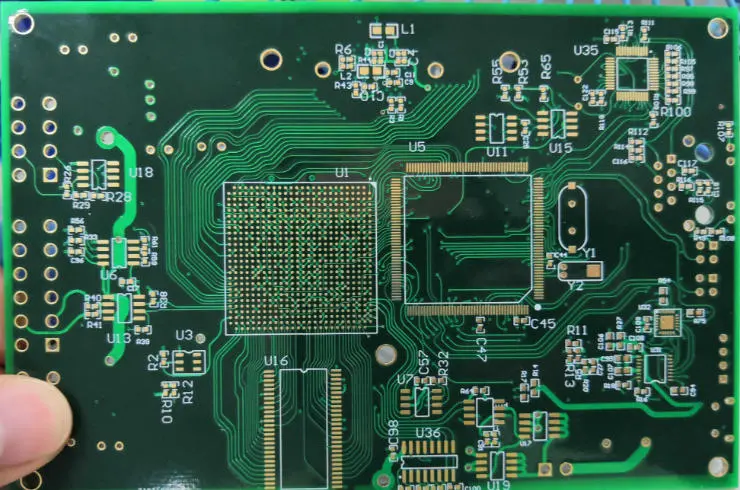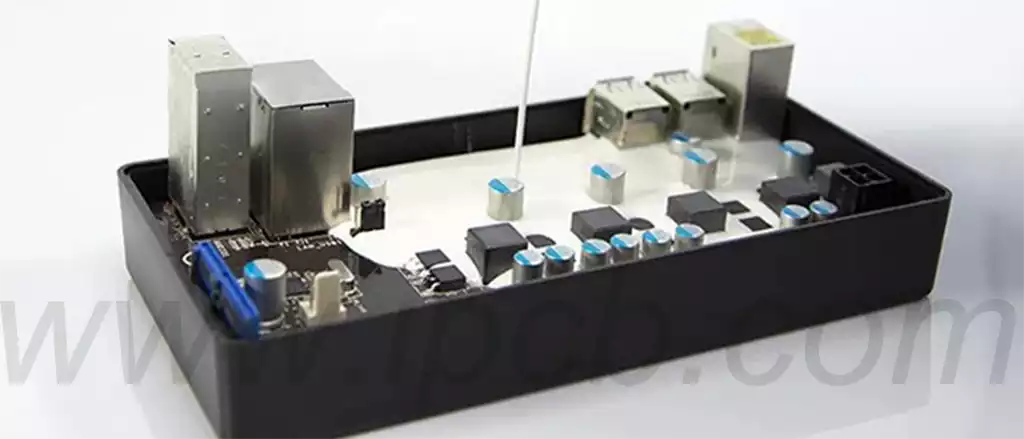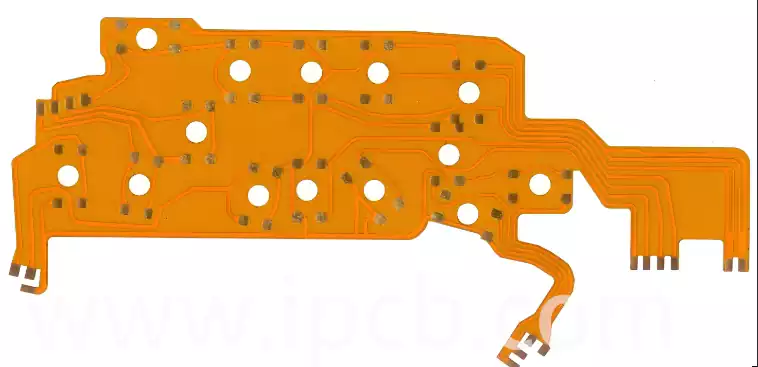In the production of HDI boards, solder mask bridges within BGA areas and between fine-pitch pads serve as crucial micro-isolation barriers despite their minute dimensions. Measuring merely 0.1–0.2mm in width, they must separate adjacent pads to prevent soldering short circuits. However, following selective OSP treatment, solder mask bridges frequently exhibit cracking, detachment, or erosion, leading to increased short-circuit rates. This is not due to an inherent incompatibility between selective OSP and solder mask bridges, but rather hinges on the level of process control. So, how exactly should the process be optimised to ensure robust, undamaged solder mask bridges?
Solder mask bridges, as a critical component of the PCB solder mask layer positioned between adjacent pads, primarily serve a ‘physical separation’ function to prevent solder bridging. Their most prominent core characteristic is being ‘thin and narrow’, a trait that inherently renders them fragile:
Firstly, their minute dimensions: for fine-pitch pads (spacing within the 0.3–0.5mm range), solder mask bridges measure merely 0.1–0.2mm in width and 10–15μm in thickness—thinner and narrower than a human fingernail.
Secondly, its pliable composition: Solder resist layers predominantly utilise epoxy resin, exhibiting a Shore D hardness of merely 60–80. Softer than common plastics, it remains highly susceptible to damage from external forces or chemical corrosion;
Thirdly, adhesion depends on the substrate: solder resist bridges are secured by the bonding strength between the epoxy resin and the PCB substrate or copper surface. Once this bond is compromised, the bridge readily detaches.
The Three Major Effects of Selective OSP Processes on Solder Resist Bridges: Both Risk and Protection
The selective OSP process encompasses pre-treatment, laser windowing, coating, and post-treatment stages. At each step, potential interactions with solder mask bridges may occur. These interactions carry risks of damaging the bridges while also offering opportunities for protection through process optimisation, manifested in the following three aspects:
Risk One: Laser Window Opening ‘Misfires’ on Solder Mask Bridges – Triggering Edge Carbonisation and Cracking
Laser window opening is a critical step in selective OSP. However, insufficient precision in controlling high-energy lasers can lead to unintended damage to adjacent solder mask bridges, akin to a surgical scalpel cutting off-target.
Manifestation: When laser energy exceeds 10 J/cm² or positioning deviates beyond 5 μm, solder resist bridges’ edges undergo laser ablation, resulting in carbonisation (evident as black marks) or micro-cracks. More critically, if the aperture size is excessively large, the laser may directly ‘cut’ through the solder mask bridge, causing its width to diminish (e.g., from 0.15mm to 0.1mm) and thereby compromising its isolation capability.
Actual measurement data: At a PCB manufacturer, processing 0.15mm solder resist bridges with a 12J/cm² laser revealed edge carbonisation in 50% of bridges. During subsequent soldering, these carbonised bridges failed to effectively block solder, causing the short-circuit rate to surge from 1.2% to 5%.
Risk Two: Pre-treatment/Coating ‘Corrosion’ of Solder Resist Bridges – Resulting in Reduced Adhesion
During pre-treatment for selective OSP (including micro-etching and plasma cleaning) and the OSP coating process, inappropriate chemical selection or improper parameter settings may cause corrosion of solder resist bridges.
Pre-treatment corrosion: Acidic solutions used in micro-etching (e.g., sulphuric acid mixed with hydrogen peroxide) may penetrate the interface between solder mask bridges and substrates if concentrations exceed 10% or immersion times exceed 60 seconds. This compromises the bond strength, leading to ‘peeling’ of the solder mask bridges. During plasma cleaning, excessively high power settings (exceeding 500W) can roughen the solder resist bridge surface or even cause pinholes.
OSP coating corrosion: Certain OSP solutions contain weakly acidic components (pH 3–5). If baking is delayed beyond two hours post-coating, prolonged contact with these acids causes solder mask bridges to soften and deform.
Failure case: During micro-etching, a manufacturer employed 15% sulphuric acid concentration with a 90-second immersion time. Consequently, the adhesion of 0.15mm solder resist bridges deteriorated from Grade 5B (no paint loss) to Grade 3B (localised flaking). During subsequent OSP coating, 8% of the solder mask bridges detached entirely.

Protective Function: OSP coating ‘covers’ solder resist bridges – achieving oxidation and scratch resistance
With precise process control, selective OSP can indirectly protect solder mask bridges.
Oxidation prevention: During OSP application, a minimal layer (thickness < 0.5μm) adheres to the solder mask bridge surface, forming a transparent protective film. This film effectively prevents oxidation and ageing of the solder mask bridge due to moisture exposure during storage.
Scratch resistance: Post-processing measures such as vacuum packaging and desiccant inclusion prevent solder mask bridges from being scratched by debris during transportation.
Test Comparison: Solder resist bridges protected by OSP exhibited an ageing rate (manifested as surface yellowing and hardening) of merely 5% after three months’ storage at 85°C/85% RH. In contrast, unprotected bridges showed a 20% ageing rate with a 15% reduction in isolation capability.
Key Process Optimisation Strategy: Four Steps to Fortify Solder Mask Bridges
To prevent damage to solder mask bridges during selective OSP processes, the critical balance lies between ‘precise operation’ and ‘gentle treatment’. Optimising the following four key steps ensures bridges remain intact:
Step One: Laser Window Opening – ‘Low Energy + Precise Positioning’ to Eliminate Accidental Damage
Energy Regulation: Flexibly adjust laser energy based on solder mask bridge width. For bridges between 0.1–0.15mm wide, employ 5–7 J/cm² energy; for 0.15–0.2mm widths, use 7–9 J/cm². This ensures the laser acts solely on the window area, avoiding contact with the solder mask bridge.
Positioning Calibration: Prior to each operation, calibrate laser positioning using a reference plate to ensure positioning deviation remains below 3μm. For ultra-narrow solder mask bridges under 0.1mm wide, employ ‘dual-camera positioning’ technology (simultaneous front and side camera alignment) to further enhance positioning accuracy.
Optimisation Outcomes: After reducing laser energy from 12 J/cm² to 7 J/cm², a factory achieved a significant drop in solder mask bridge carbonisation rate from 50% to 5%, with short-circuit rates stabilising at 1.2%.
Step Two: Pre-treatment – ‘Low Concentration + Short Duration’ to Mitigate Corrosion Risks
Micro-etching Optimisation: Acid solution concentration controlled at 5%–8%, with immersion time set to 30–45 seconds. Immediately following etching, rinse with deionised water for over 3 minutes to prevent residual chemicals from corroding solder mask bridges.
Plasma Cleaning Optimisation: Power controlled at 300–400W, cleaning time set to 10–15 seconds, employing ‘low-temperature plasma’ technology (below 60°C) to avoid thermal damage to solder mask bridges.
Verification Method: Following pre-treatment, conduct adhesive strength testing on solder mask bridges using adhesive tape. Only proceed to subsequent processes upon achieving Grade 5B adhesion (no detachment upon tape removal).
Step Three: OSP Coating – ‘Precise Quantity Control + Prompt Baking’ to Prevent Softening and Deformation
Coating Control: When employing inkjet coating, maintain a nozzle-to-solder mask bridge distance exceeding 10μm while reducing ink output by 20% to prevent excessive OSP accumulation on the solder mask bridge surface. Post-coating baking must be completed within one hour (temperature: 80–100°C; duration: 30 minutes) to accelerate OSP curing and minimise acidic residue.
OSP Selection: Prioritise neutral OSP solutions (pH 4.5–5.0) to avoid corrosion of solder mask bridges by strongly acidic OSP. For ultra-narrow bridges under 0.1mm width, employ ‘acid-free OSP’ to further mitigate corrosion risks.
Test Data: After baking, the softening rate of 0.1mm solder resist bridges coated with neutral OSP decreased from 15% to 2%, while maintaining 5B-grade adhesion.
Step Four: Post-Processing – ‘Gentle Handling + Vacuum Protection’ to Prevent Physical Damage
Post-Processing Operations: When inspecting solder mask bridges, use a soft-bristled brush (not cotton swabs) for gentle cleaning to prevent bridge detachment from external friction. When handling PCBs, employ dedicated trays to avoid collisions between bridges and tray edges.
Storage Protection: Employ ‘aluminium foil vacuum bags + dual-layer desiccant’ packaging. Maintain storage temperatures between 20–25°C and humidity levels at 40%–60%. Storage duration should not exceed three months to prevent ageing from prolonged exposure.
Effect Comparison: Solder mask bridges packaged under vacuum exhibit a detachment rate of merely 0.5% during transit, whereas conventional packaging yields a significantly higher rate of 3%.
The impact of selective OSP processing on solder mask bridges is not fixed; it carries both risks of damage and protective benefits. By precisely implementing four key process optimisation strategies—low-energy laser windowing with precise positioning, low-concentration short-duration pretreatment, OSP coating with precise quantity control and immediate baking, and gentle handling with vacuum protection during post-treatment—solder mask bridges can be effectively safeguarded. This ensures their continued reliable isolation function within HDI boards, thereby safeguarding high-quality PCB production.



